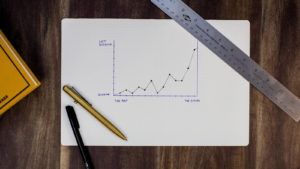 Both predictive analytics and predictive forecasting can be critical tools to use in your supply chain enterprise. Gaining an understanding of what they each are and when to use them can help improve your profit margins. With one tool, you get a look at the history of the items in your database, and with the other you get an analysis of how people react to your product looking at prior purchase trends. Both tools are essential to supply chain organizations, or you can alternate using the tools to see which is more effective for your business.
Both predictive analytics and predictive forecasting can be critical tools to use in your supply chain enterprise. Gaining an understanding of what they each are and when to use them can help improve your profit margins. With one tool, you get a look at the history of the items in your database, and with the other you get an analysis of how people react to your product looking at prior purchase trends. Both tools are essential to supply chain organizations, or you can alternate using the tools to see which is more effective for your business.
Predictive Forecasting
Successful demand forecasting can put you ahead of your competitors, and predictive forecasting is the science behind inventory management. Think of predictive forecasting as the mathematics behind inventory and sales.
If you’ve been in business selling the same products for years, predictive forecasting can analyze all of your historical data. What times of year did you sell certain products? If you have trends in your data, you can project slow periods and consider putting items on sale then, or you can predict peak times in which you want to make sure you have the right amount of inventory in stock.
Remember that running out of inventory will cause you to lose customers who become frustrated when an item is backordered. Yet, having too much inventory can bleed money if items expire or run out of shelf life before they can be sold. Managing that balance is the key to successful inventory management, and though it is complex, a proper predictive forecasting tool will pay dividends.
Knowing the history of an item can help you predict the item’s future. If you have sold 47 of the exact same part each of the last 5 Novembers, there is a good chance you will sell 47 again this year. That’s what forecasting tells you. If something major has changed the industry or changed the way people think about your item, that might change the number from 47, and that’s what predictive analytics tells you.
Predictive Analytics
This type of analysis helps prevent you from having excess stock. Depending on your industry, this could save you thousands of dollars. For example, if you are stocking batteries (or products that contain batteries) they have a shelf-life and could expire before you have a chance to sell the unit. With predictive analytics, you can accurately predict how consumers will go about purchasing your product.
Instead of analyzing statistics and historical purchases, predictive analytics looks at the human element of consumerism. People are more apt to purchase wrapping paper as Christmas approaches and more likely to purchase bathing suits as the warm weather hits. Factoring this in, you can stock your inventory accordingly, ensuring you have enough of what people are likely to buy at certain times of the year. While numbers certainly drive business and sales, it’s important not to overlook the human element.
How Exactly Do They Differ?
It’s all about science and math versus how people think. With predictive forecasting, you are looking at what the actual item has done in past years. With predictive analytics, you’re going after trends in what people do. Analytics help you find your target market and what age group and demographics to market towards.
Think of predictive analytics as a tool your marketing department can use. With historical trends in demographics, your team can run tailored ad campaigns and possibly gain new customers.
Predictive forecasting should be used by your inventory managers, monitoring items in stock and making sure you won’t run out or have too much, and it can also factor in real-time market reactions to make sure the data being forecasted is always 100% accurate.
How to Know Which Tool to Use
In reality, you should employ both techniques to be successful. Most of the time you can probably get away with predictive forecasting, but to forget about predictive analytics means you could miss out on analyzing what people really want.
Predictive analytics has actually been used to foresee flu outbreaks, and with the entire world being affected by COVID-19, you could see more of this type of research moving forward.
You wouldn’t want to cook chicken parmesan without the chicken or without the parmesan, and the same goes for managing your supply chain. While each can be successful on their own, you need them both to have a perfect dish, just like you need both predictive forecasting and predictive analytics to optimize your supply chain effectively.
What’s Next?
Try out both types of tools to see how they work for your organization. Maybe you don’t need both. Maybe you know exactly how many snow shovels you sell every winter, so you don’t need the forecasting tool. However, in that case, you might want to still consider predictive analysis because your customers could change. Maybe you are in a town with a lot of transient people moving in and out of the neighborhood every year. Analytics can help you understand your customers and if there are any major changes in your clientele.
What about marketing to a new demographic? Take sports equipment and clothing. Years ago it was made mostly for men. Sure, girls and women played, but they had to use boys’ clothing and men’s equipment. A decade or two ago, predictive analysis showed that women were becoming just as interested in sports as men and clothing and equipment started to be designed and marketed towards women.
Now, if you go in a Dick’s Sporting Goods, for example, you will see just as much gear for girls as you do for boys. Predictive analytics did that — that tool showed a shift and an opportunity to gain a whole new base of customers. Don’t be afraid to apply tools to have the same effect in your business.
Contact us today to learn more about how analysis and forecasts can help improve all aspects of your supply chain. Our team can help you sort out which type of tools are best for your supply chain organization.
